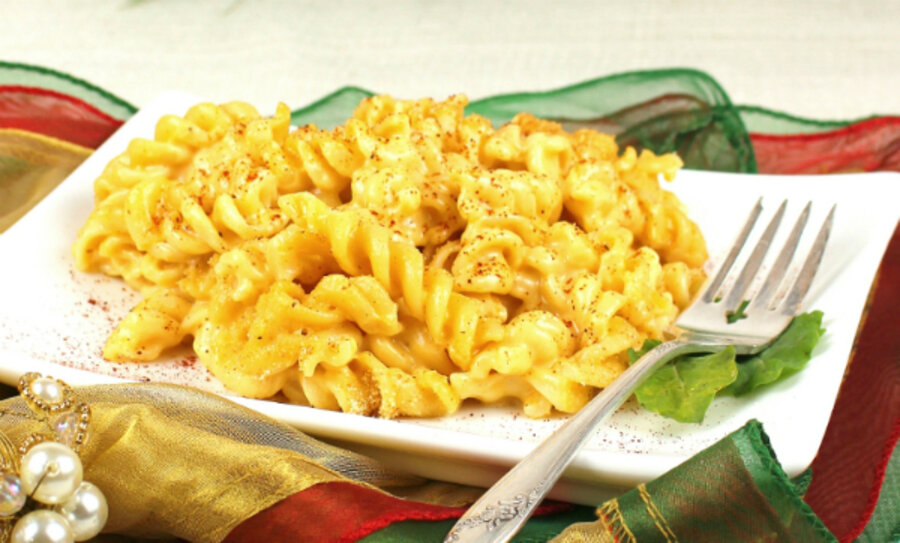Creamy baked macaroni and cheese
One of my daughter’s favorite foods is macaroni and cheese. I think she could eat it every day! And she is not alone. There are millions (billions?) of die-hard cheese lovers out there who would enjoy nothing more than having this and nothing else.
When I was growing up, my mother made nothing like this. We got “blue boxed.” And if you have never tasted anything else, you might really enjoy it. But once you have had mac and cheese made from scratch, macaroni mixes from a blue box aren't going to cut it. So if you want to maintain the relationship with blue boxes and remain a devoted fan, I simply must ask that you stop reading here.
However, I do hope you read on!
Contrary to popular belief, making macaroni and cheese really isn’t that much of a fuss. No harder than boiling a pot of pasta and making a skillet full of gravy.
One of the difficulties that can be found when making cheese, however, is making it improperly. For one thing, cheese does not like being heated. If when making your sauce you add the cheese and stir it around and stir it around and the heat is still on and … all of a sudden the cheese became very very nasty.
What happened?
When cheese is overheated, the milk separates out from the fat, leaving a greasy film and the remaining cheese becomes stringy and grainy. I am sure we have all had it happen at least once. And I am quite sure none of us want it to happen again. You might see people discuss whether or not it occurred when using pregrated cheese or freshly grated, but the truth of it is, if you overheat the cheese it will break, no matter what kind you use.
Some cheeses are better suited for melting, however, and do very well when combined with a more crumbly hard cheese such as cheddar. Melting cheeses have a velvety texture to them. I know most people are familiar with the melting capabilities of mozzarella. Who has not had a perfectly wonderful slice of hot pizza that when they lifted the wedge, the cheese stretched out like a silken arm, beckoning us to taste it?
But while mozzarella is a good mild cheese perfect for pizza and other dishes with assertive flavors, it is really too tame for macaroni and cheese.
And most of us also know the joys of fondue, dipping crusty pieces of bread and veggies or meats into its silken cheesiness. The type of cheese used most for fondue is fontina, which is a milk cheese originally from the Alps region of Italy and noted for its very assertive flavor.
But for macaroni and cheese we really would like something between the two extremes that also has great melting capabilities. Enter fontinella cheese, which is a creamy semi-soft North American made cheese that has a bit of the sharpness of fontina, but not overwhelmingly so, and the melting capabilities of mozzarella. Paired with the distinctive flavor of cheddar cheese, the two cheeses combine to form the perfect marriage of flavor, and the texture of the fontinella helps keep the cheddar from being grainy.
Of course, you can use fontinella cheese on other things as well, such as grilled chicken breast with melted cheese and grilled vegetables such as peppers, garlic and onion. But it also makes short work of turning a burger from simple to sublime. Remember this cheese the next time you want a perfect melt with a definite presence of flavor!
The macaroni in this dish is a sauce that is combines with the cooked pasta, then baked for a short period until it is hot. This little bit of time also helps the flavors permeate the pasta. But if you are in a real hurry, it is no big deal if you want to cook the pasta, whip together the sauce, stir them together and serve.
If the sauce seems a bit thin right after doing this, remember that cheese sauces will thicken upon standing. As well, if you finish your macaroni a tad too soon before dinner and need to reheat, thin it just a bit with a touch of milk or cream.
But I stress again, the most important thing for you to come away with when making this recipe is to not overheat or boil the cheese. Remove the pan from heat before you stir in the cheese to melt. If it is not warm enough to melt it all, put it back on the heat only “briefly” but absolutely do not let the cheese cook.
I do hope you enjoy! This comfort food really is a family favorite in our home.
Creamy Baked Macaroni and Cheese
3 cups uncooked macaroni or rotini noodles
3 tablespoons unsalted butter
3 tablespoons flour
1 cup milk
1 cup half-and-half
1/2 teaspoon paprika
2 teaspoons Dijon mustard
Salt and black pepper to taste
4 ounces mild cheddar cheese, shredded
4 ounces fontinella cheese (not fontina), shredded
1-2 tablespoons softened butter (approximate)
2 tablespoons dry bread crumbs
1. Preheat oven to 350 degrees F.
2. Heat butter and flour in a saucepan, whisking until smooth.
3. Mix in half-and-half, milk, paprika, Dijon mustard and salt and pepper and stir constantly over med-low heat until mixture thickens.
4. Remove from heat and stir in the cheese until it melts completely, then taste again for salt.
5. Pour noodles into a buttered casserole dish and sprinkle with the dry bread crumbs.
6. Bake at 350 degrees F. for 25-30 minutes.









